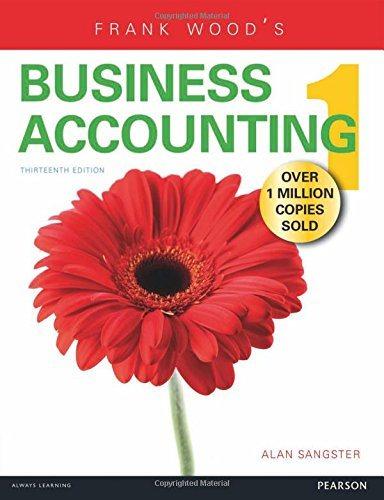(A) Explain why a provision may be made for doubtful debts. (B) Explain the procedure to be...
Question:
(A) Explain why a provision may be made for doubtful debts.
(B) Explain the procedure to be followed when a customer whose debt has been written-off as bad subsequently pays the amount originally owing.
(C) On 1 January 2014 D. Watson had debtors of £25,000 on which he had made an allowance for doubtful debts of 3%.
During 2014,
(1) A. Stewart, who owed D. Watson £1,200, was declared bankrupt and a settlement of 25p in the £ was made, the balance being treated as a bad debt.
(2) Other bad debts written-off during the year amounted to £2,300.
On 31 December 2014 total accounts receivable amounted to £24,300 but this requires to be adjusted as follows:
(a) J. Smith, a debtor owing £600, was known to be unable to pay and this amount was to be written-off.
(b) A cheque for £200 from S. Mclntosh was returned from the bank unpaid.
D. Watson maintained his allowance for doubtful debts at 3% of accounts receivable.
Required:
(1) For the financial year ended 31 December 2014, show the entries in the following accounts:
(1) Allowance for doubtful debts (2) Bad debts (2) What is the effect on net profit of the change in the allowance for doubtful debts?
Step by Step Answer:

Frank Woods Business Accounting Volume 1
ISBN: 9781292084664
13th Edition
Authors: Alan Sangster, Frank Wood





